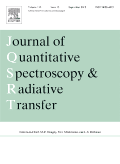
JOURNAL OF QUANTITATIVE SPECTROSCOPY & RADIATIVE TRANSFER
Scope & Guideline
Unveiling the complexities of light through rigorous research.
Introduction
Aims and Scopes
- Spectroscopic Analysis:
The journal publishes research on various spectroscopic techniques, including infrared, Raman, and UV spectroscopy, focusing on the analysis of molecular spectra and line shape parameters. - Radiative Transfer Modeling:
Significant emphasis is placed on the development and application of radiative transfer models, particularly in complex media such as atmospheres, combustion systems, and astrophysical environments. - Collisional Effects in Spectra:
Research addressing the impact of collisions on spectral lines, including broadening and shifting phenomena, is a core area, with applications in atmospheric studies and remote sensing. - Nanostructured Materials and Metamaterials:
The journal explores the optical properties and applications of nanostructured materials, including metamaterials, in enhancing light-matter interactions and radiative heat transfer. - Machine Learning in Spectroscopy:
Recent contributions highlight the integration of machine learning techniques for data analysis, spectrum fitting, and retrieval of molecular parameters from complex datasets. - Environmental and Atmospheric Studies:
Research related to the spectroscopic characterization of atmospheric constituents, including greenhouse gases and aerosols, is a prominent focus area, contributing to climate science and environmental monitoring.
Trending and Emerging
- Advanced Computational Techniques:
The use of advanced computational approaches, such as machine learning and artificial intelligence, is gaining momentum for spectrum analysis, predictive modeling, and data inversion, significantly enhancing the efficiency and accuracy of spectroscopic studies. - Multiscale and Multimodal Studies:
Research integrating multiple scales and modalities—such as combining spectroscopy with imaging techniques or incorporating various environmental parameters—has become increasingly popular, allowing for comprehensive analysis of complex systems. - Environmental Monitoring and Climate Studies:
There is a growing focus on using spectroscopic methods for environmental monitoring, particularly in assessing greenhouse gas emissions and atmospheric pollutants, contributing to climate change research and policy. - Nanophotonics and Metasurfaces:
Emerging themes around the optical properties of nanostructured materials, including metasurfaces and plasmonic structures, are gaining attention for their potential applications in sensing, energy harvesting, and thermal management. - Quantum and Relativistic Spectroscopy:
Research exploring quantum mechanical effects in spectroscopy and relativistic corrections in radiative transfer is trending, reflecting an increased interest in the fundamental interactions at the atomic and molecular levels.
Declining or Waning
- Traditional Spectroscopy Techniques:
There has been a noticeable decline in publications centered around traditional spectroscopy methods without integration of advanced computational techniques or novel applications. - Static Models of Radiative Transfer:
Research utilizing static models for radiative transfer, which do not account for dynamic or complex atmospheric conditions, appears to be decreasing as more sophisticated and adaptable modeling approaches gain traction. - Basic Line Shape Studies:
The focus on fundamental line shape studies, without substantial application or integration into broader spectroscopic analysis, is less frequent, as researchers now prefer comprehensive studies that combine multiple aspects of spectroscopy. - Single-Particle Scattering Analysis:
Research dedicated solely to single-particle scattering phenomena is becoming less common, with a shift towards studies that consider interactions in the context of complex particle ensembles or urban environments. - Classical Theoretical Approaches:
There is a waning interest in purely classical theoretical approaches to spectroscopy and radiative transfer, as quantum mechanical and relativistic treatments increasingly dominate the research landscape.
Similar Journals

OPTICS AND SPECTROSCOPY
Connecting Innovators in the Realm of OpticsOptics and Spectroscopy is a pivotal peer-reviewed journal published by Pleiades Publishing Inc, focusing on the intricate fields of atomic and molecular physics, as well as optics. Established in 1972, and enjoying a legacy of convergence periods that reinforce its commitment to the evolving landscape of these scientific domains, the journal aims to disseminate high-quality research that advances our understanding of light-matter interactions, electronic materials, and spectroscopic techniques. Despite its current Q4 categorization in both the Atomic and Molecular Physics and Electronic, Optical and Magnetic Materials fields, with corresponding Scopus rankings reflecting its developing influence, the journal remains a valuable resource for researchers and professionals seeking to publish their findings, explore new methodologies, and connect with a community dedicated to innovation in optics. Although there is currently no open access option, the journal's expansive readership and its stability in publication over the decades make it an important platform for both established and emerging researchers in the field.
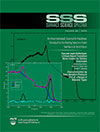
Surface Science Spectra
Bridging Theory and Application in Surface ScienceSurface Science Spectra is a critically acclaimed journal published by AIP Publishing, serving as an essential resource in the fields of Condensed Matter Physics, Surfaces and Interfaces, and Surfaces, Coatings and Films. With an ISSN of 1055-5269 and an E-ISSN of 1520-8575, this peer-reviewed journal provides a platform for sharing innovative research and groundbreaking findings, contributing to a deeper understanding of surface phenomena and their applications. While the journal operates under a traditional subscription model, its impact is recognized in its 2023 rankings where it holds a Q3 category in both Condensed Matter Physics and Surfaces and Interfaces, and a Q2 category in Surfaces, Coatings and Films. The journal has been publishing since 1992 and continues to attract contributions from leading researchers worldwide. With an emphasis on high-quality research articles, Surface Science Spectra is committed to advancing knowledge in material science and engineering, making it an indispensable reference for scholars, industry professionals, and students alike.
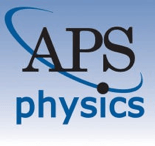
PHYSICAL REVIEW A
Illuminating the Path of Optical AdvancementsPHYSICAL REVIEW A, published by the American Physical Society, is a leading journal in the field of Atomic and Molecular Physics and Optics, boasting a Q1 category ranking in its area for 2023. With an ISSN of 2469-9926 and an E-ISSN of 2469-9934, this journal plays a pivotal role in disseminating high-quality research findings, theories, and methodologies that shape current understanding and advancements in the discipline. Although not an open-access journal, it remains highly accessible to professionals and academia through institutional subscriptions. The journal's impactful contributions are evident from its Scopus rank of #70 out of 224 in the field, placing it in the 68th percentile for scholarly impact. As a hub of innovative research and a vital resource for both students and seasoned researchers alike, PHYSICAL REVIEW A remains essential for those seeking to stay abreast of breakthroughs in atomic and molecular studies, as well as optics and photonics.

EUROPEAN PHYSICAL JOURNAL D
Illuminating Complex Physical PhenomenaEUROPEAN PHYSICAL JOURNAL D, published by SPRINGER, stands as a pivotal resource in the field of Atomic and Molecular Physics, and Optics. With an ISSN of 1434-6060 and an E-ISSN of 1434-6079, this journal has established itself as a platform for high-quality, peer-reviewed research, catering to a diverse audience of researchers, professionals, and students. Notably, the journal is classified in the Q3 quartile for 2023, reflecting a respectable standing within its category, ranked #123 out of 224 in Scopus, with a 45th percentile. Covering a wide range of topics through contributions that span from 1998 to 2024, the journal encourages the dissemination of innovative ideas and groundbreaking studies in the rapidly evolving domain of atomic and molecular science. By offering open access publication options, EUROPEAN PHYSICAL JOURNAL D enhances the reach and impact of its authors' work, ultimately fostering a greater understanding of complex physical phenomena.
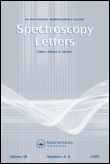
SPECTROSCOPY LETTERS
Pioneering Insights in Optics and Molecular StudiesSPECTROSCOPY LETTERS, published by Taylor & Francis Inc, is a pivotal journal that plays a significant role in the fields of Analytical Chemistry, Atomic and Molecular Physics, and Optics. With an ISSN of 0038-7010 and E-ISSN of 1532-2289, it provides a platform for the dissemination of cutting-edge research and developments in spectroscopy and its wide-ranging applications. As of 2023, the journal is ranked in the third quartile (Q3) across its relevant categories, reflecting its importance in these scientific domains. The journal has a continuous publication history from 1968 to 2024, establishing a rich legacy in academic literature. Although it currently does not offer Open Access options, SPECTROSCOPY LETTERS remains a valuable resource for researchers, professionals, and students seeking to advance their knowledge and applications in spectroscopy. For those in the arena of physics and chemistry, this journal is essential for keeping abreast of the latest findings and methodologies in the field.

ATOMIC SPECTROSCOPY
Advancing the Frontiers of Spectroscopy.ATOMIC SPECTROSCOPY is a distinguished journal specializing in the field of spectroscopy and published by ATOMIC SPECTROSCOPY PRESS LTD. With ISSN 0195-5373 and e-ISSN 2708-521X, this journal has been a cornerstone in advancing the discipline since its inception, thriving in its relevant domain for over four decades, covering converged research years from 1980 to 1989 and from 1996 to 2024. Currently holding a Category Quartile of Q2 in Spectroscopy for 2023, ATOMIC SPECTROSCOPY ranks 34th among 76 in its field according to Scopus, placing it in the 55th percentile, thereby affirming its critical role as a resource for researchers, professionals, and students alike. This journal serves as a platform for disseminating innovative research, methodological advancements, and breakthroughs in atomic and molecular spectroscopy, fostering a comprehensive understanding that is essential for progress in analytical chemistry and related disciplines. While it operates under a non-open access model, the journal ensures broad reach and visibility within the academic community. For those passionate about spectroscopy, ATOMIC SPECTROSCOPY remains an invaluable resource for staying updated on the latest developments, contributing to its reputation as a leading journal in the field.
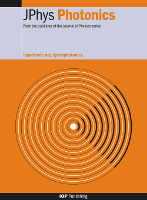
Journal of Physics-Photonics
Empowering Discoveries through Open AccessJournal of Physics-Photonics, published by IOP Publishing Ltd in the United Kingdom, is an esteemed Open Access journal that has been at the forefront of research in the field of photonics since its inception in 2018. With an impressive portfolio, the journal has achieved Q1 ranking in 2023 across multiple disciplines, including Atomic and Molecular Physics, Electrical and Electronic Engineering, and Electronic, Optical, and Magnetic Materials. This positions it among the leading journals in these areas, reflecting its significant influence and contribution to advancing knowledge and innovation. The journal aims to disseminate high-quality research findings that encompass a wide range of topics in photonics, promoting interdisciplinary approach that fosters collaboration among researchers, professionals, and students. With its commitment to open access, Journal of Physics-Photonics ensures that groundbreaking research is accessible to all, empowering a global audience to engage with and benefit from the latest advancements in photonic technologies.

SPECTROSCOPY
Transforming Knowledge into Spectroscopic SolutionsSPECTROSCOPY is a vital peer-reviewed journal published by MJH Life Sciences, dedicated to advancing the field of spectroscopy and its applications across various disciplines including analytical chemistry, atomic and molecular physics, and optics. Established with a vision to disseminate cutting-edge research, the journal has a broad scope that encompasses the latest developments, methodologies, and technologies in spectroscopy. Although positioned in the Q4 quartiles for its categories as of 2023, it remains an important resource for researchers and students alike, providing insights into emerging trends and challenges in the field. Issues are published regularly, facilitating knowledge exchange and collaboration among professionals. With access options available in traditional formats, SPECTROSCOPY strives to reach a diverse audience, underscoring its relevance and necessity in today’s ever-evolving scientific landscape. For those in pursuit of innovative solutions and comprehensive analyses in spectroscopy, this journal serves as an indispensable platform.

JOURNAL OF NEAR INFRARED SPECTROSCOPY
Empowering Knowledge in Near-Infrared SpectroscopyJOURNAL OF NEAR INFRARED SPECTROSCOPY, published by SAGE PUBLICATIONS LTD, is a leading platform dedicated to advancing the field of near-infrared spectroscopy, a pivotal technique for various applications in chemical, food, and agricultural analyses. With its ISSN 0967-0335 and E-ISSN 1751-6552, this highly respected journal publishes innovative research and review articles that contribute to the understanding and application of spectroscopic methods. The journal has maintained a respectable Q3 ranking in the Spectroscopy category and has a Scopus rank of #51/76 in Chemistry _ Spectroscopy, placing it within the 33rd percentile. This positions the journal as an essential resource for researchers, professionals, and students looking to stay informed on the latest advancements and methodologies in near-infrared spectroscopy. Although the journal currently does not offer open access options, it is pivotal for fostering knowledge exchange and collaborative research within its community. With convergence spanning from 1996 to 2024, it continues to be a reliable source of impactful academic content.
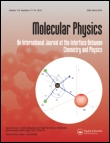
MOLECULAR PHYSICS
Unraveling the mysteries of matter at the molecular level.MOLECULAR PHYSICS, published by Taylor & Francis Ltd, is a distinguished international journal that has been advancing the fields of biophysics, condensed matter physics, molecular biology, and physical and theoretical chemistry since its inception in 1958. With an ISSN of 0026-8976 and an E-ISSN of 1362-3028, the journal provides a rich platform for the dissemination of high-quality research, evidenced by its Q3 ranking in several domains including both biophysics and condensed matter physics as of 2023. Although the journal operates on a traditional subscription model rather than an Open Access basis, its rigorous selection process ensures the publication of relevant and impactful articles. The journal's continued convergence of research until 2024 underlines its ongoing significance and adaptability in an ever-evolving scientific landscape. For researchers, professionals, and students alike, MOLECULAR PHYSICS serves as an essential resource for keeping abreast of the latest developments, fostering collaboration, and inspiring future advancements in molecular theory and applications.